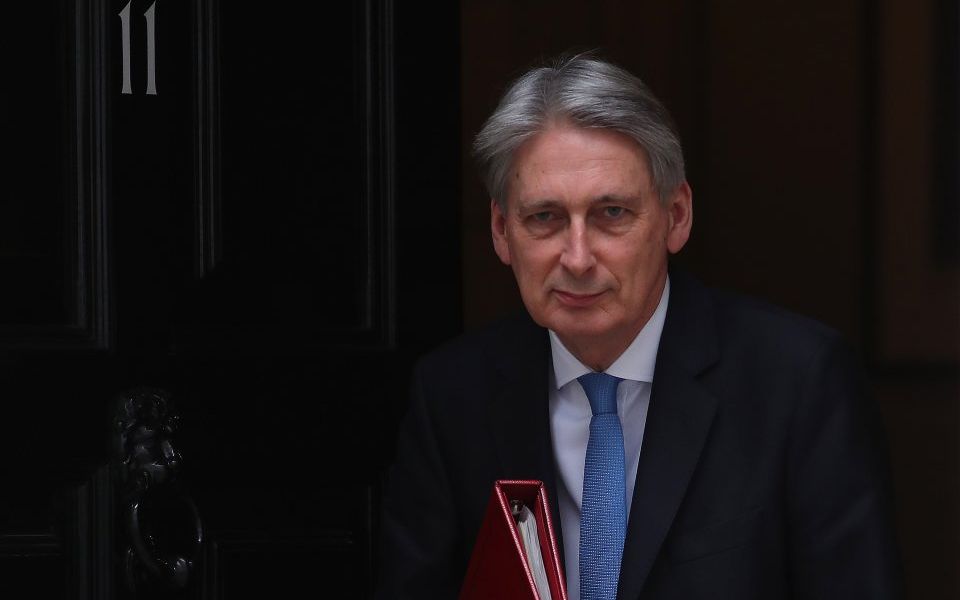End of austerity not ‘compatible’ with eliminating deficit says Institute for Fiscal Studies ahead of Budget

The government faces a stark choice between upholding Theresa May’s promise to “end austerity” or meet its target of eliminating the deficit, according to a detailed analysis by one the UK’s most trusted economic bodies.
The Institute for Fiscal Studies (IFS) will today say that chancellor Philip Hammond will have to find an extra £19bn a year in the upcoming Budget if austerity cuts are to stop.
That extra money would only avoid further cuts to unprotected government department budgets, rather than delivering increases in spending. However, Paul Johnson, the IFS’s director, said even a £19bn increase in spending "is highly unlikely to be compatible with [Hammond's] desire to get the deficit down towards zero".
Read more: The end of austerity would cost £20bn, expert claims
The government would be reliant on “substantial tax rises” or a surprise jump in economic growth if it sticks with plans to reduce borrowing to zero by 2025, said Carl Emmerson, the IFS’s deputy director, ahead of the publication of its “Green Budget” research.
The chancellor will likely have £5bn of extra cash because of changes to the economy since the Office for Budget Responsibility’s last forecasts in March, but the IFS noted that would be “modest revision relative to the amount of uncertainty surrounding the public finances”, particularly as Brexit approaches.
Given its pledges to raise spending on the National Health Service by £20.5bn, as well as protected budgets for foreign aid and defence spending, the government would have to make “deep cuts elsewhere” to meet its targets if it doesn’t raise taxes, said Emmerson.
Hammond is under pressure from some of his own party to increase spending on public services at the Budget on 29 October, with local councils and prisons in particular showing signs of strains. At the Conservative party conference Prime Minister May promised to end austerity while continuing to reduce the size of public debt relative to GDP.
Read more: Theresa May declares 'austerity is over' in Conservative conference speech
However, Hammond himself, and other fiscal hawks in the Conservative party, have shown little appetite for increased spending, while tax rises are limited by commitments made in the 2017 general election manifesto. An increase of the tax take by around one per cent of GDP, which would roughly cover the extra spending to end cuts, would raise the tax take to its highest levels
On the political front, Johnson said, “Increasing borrowing is clearly the path of least resistance."
The IFS’s forecasts for the public finances come against the backdrop of relatively weak British growth. The UK has experienced a “great decoupling” since the Brexit vote mainly as a result of uncertainty affecting business investment, said Christian Schulz, who stepped up as UK economist at Citibank when Michael Saunders joined the Bank of England. Citi produced macroeconomic forecasts for the report.
Schulz said he expects a “Brexit bounce” in 2020 if a sustainable long-term trade relationship is agreed, although that still would translate to slower growth than the UK was used to before the financial crisis.
Read more: Britain's savings have undergone a "radical change" says the IFS
Meanwhile, he warned that the “enormous amount of resilience in consumer spending” in the past two years may not be repeated if the UK experiences another economic shock, owing to Britons needing to replenish their savings.
“Next time they [consumers] have to sustain growth they’ll have less firepower”, he said.
The IFS also heavily criticised entrepreneurs’ relief, a tax break for business owners which costs the government £2.7bn per year. Only 6,000 individuals received 70 per cent of the gains from the relief, with an average tax cut of £300,000.
Emmerson said: “This is too generous and should be cut.”
Read more: Prime Minister rules out customs union option after Brexit